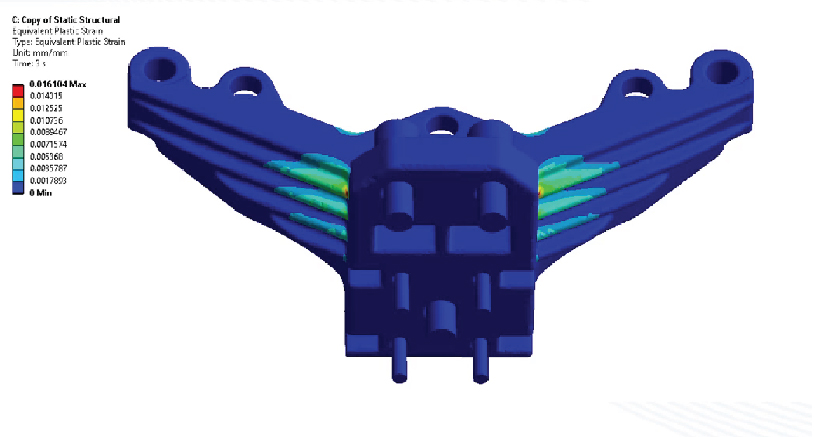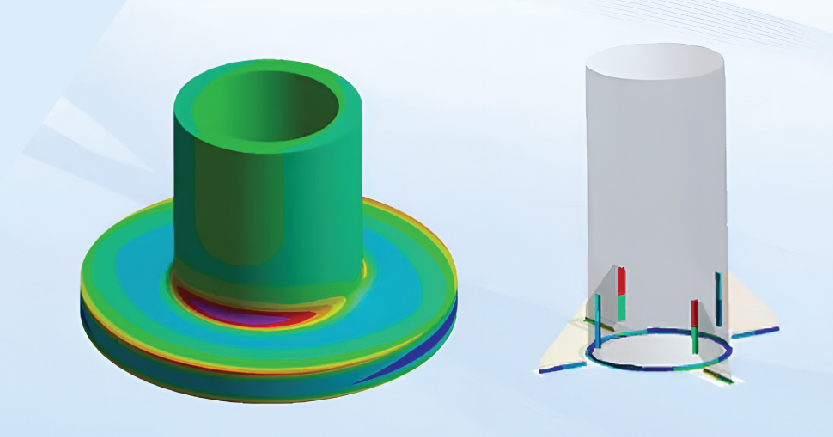
Fast strength evaluation with guideline-compliant verification according to the FKM standard. Full-surface strength verification of non-welded volume components according to FKM in compliance with guidelines. Strength verification of welds on shell and volume structures according to FKM in compliance with guidelines.
Identification of critical load cases through basic load case combinations involves analyzing different loading scenarios by combining simple individual load cases to determine the most critical conditions. This approach helps in identifying the worst-case load combinations that result in maximum stress or deformation, enabling engineers to focus on the most demanding operational conditions for design optimization and safety assessment.
Full-surface strength verification according to FKM (Forschungskuratorium Maschinenbau) guidelines involves evaluating complex, user-defined solid components to ensure they meet established fatigue and static strength requirements. This method assesses all surface areas under various loading conditions, checking for compliance with FKM’s fatigue criteria, such as stress endurance limits, material properties, and loading cycles. The verification process includes detailed stress analysis, often using finite element simulation, to capture stress concentrations and load distributions across the entire component. By applying FKM criteria, engineers ensure that components meet rigorous standards for safety and durability, especially in high-stress or cyclically loaded environments. This is crucial for achieving reliable performance over a component’s intended lifespan.
The reduction of time for strength evaluations to a minimum, even for complex scenarios, involves optimizing simulation processes and leveraging advanced computational techniques. This can be achieved by using efficient meshing strategies, parallel processing, and automation tools to streamline the analysis of stress, fatigue, and deformation. Simplified yet accurate models, along with pre-defined material and load conditions, further expedite evaluations, allowing for faster results without compromising accuracy. These methods enable quicker decision-making in design and improve overall efficiency, particularly in scenarios involving complex geometries or multi-load conditions.
Significant time savings due to simple user guidance result from intuitive, step-by-step workflows and user-friendly interfaces that streamline the simulation process. By guiding users through each stage—such as defining parameters, applying loads, and setting boundary conditions—the system minimizes complexity and eliminates the need for extensive training. This approach reduces errors, speeds up setup times, and allows users to quickly generate accurate results, ultimately enhancing overall productivity and efficiency in the design and evaluation process.
Automatic report generation on critically stressed locations in intermediate and final results involves the system identifying areas of high stress or potential failure during the simulation process. These locations are flagged and included in automatically generated reports, which highlight critical zones and provide detailed information on stress concentrations, deformation, and potential risks. This feature streamlines the analysis process, helping engineers quickly focus on critical areas of the design without manually reviewing all simulation data, thus improving decision-making and ensuring that high-risk areas are addressed promptly.

